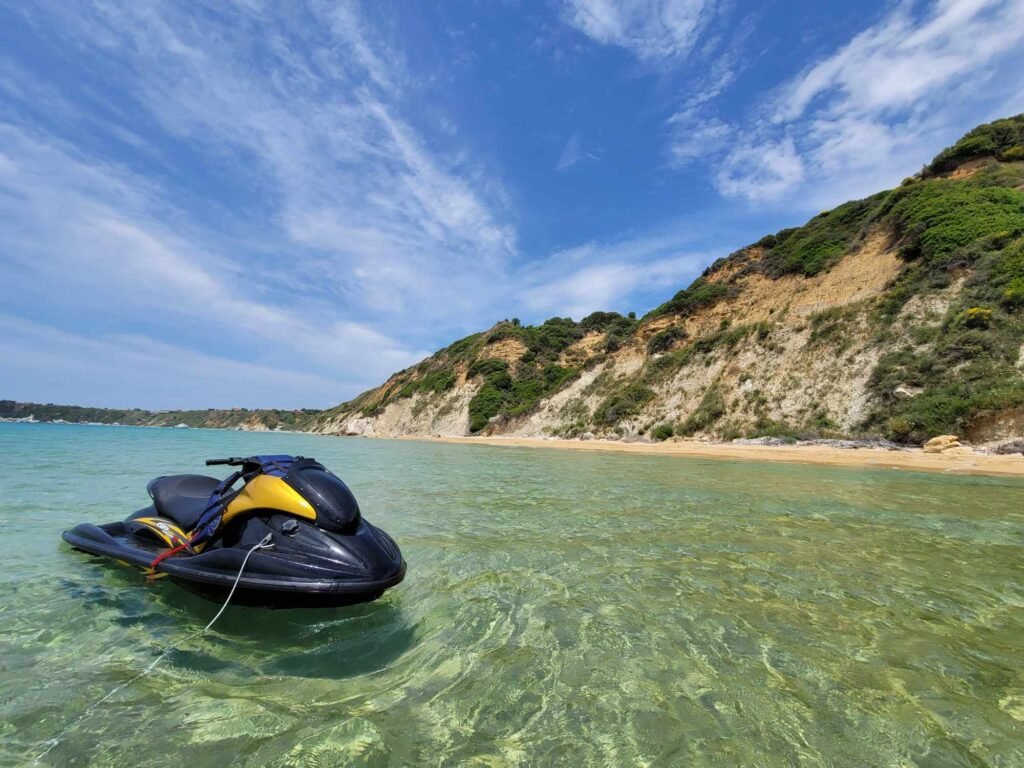This post may contain affiliate links, which means that I may make a small commission off items you purchase at no additional cost to you. Please see my terms of use page for details.
Introduction and History
The Yamaha GP1300R is a high-performance two-stroke personal watercraft, manufactured from 2003 to 2008. As the successor to the popular GP1200R, the GP1300R was built for speed, agility, and durability, solidifying its place among high-performance enthusiasts and competitive racers. This model introduced fuel injection, setting it apart from previous carbureted models in Yamaha’s lineup, allowing better fuel efficiency and throttle response. Enthusiasts have consistently praised the GP1300R for its powerful acceleration, superb handling, and reliable two-stroke engine. By 2008, the Yamaha GP1300R had developed a following, earning legendary status in the world of performance watercraft due to its blend of power, design, and reliability.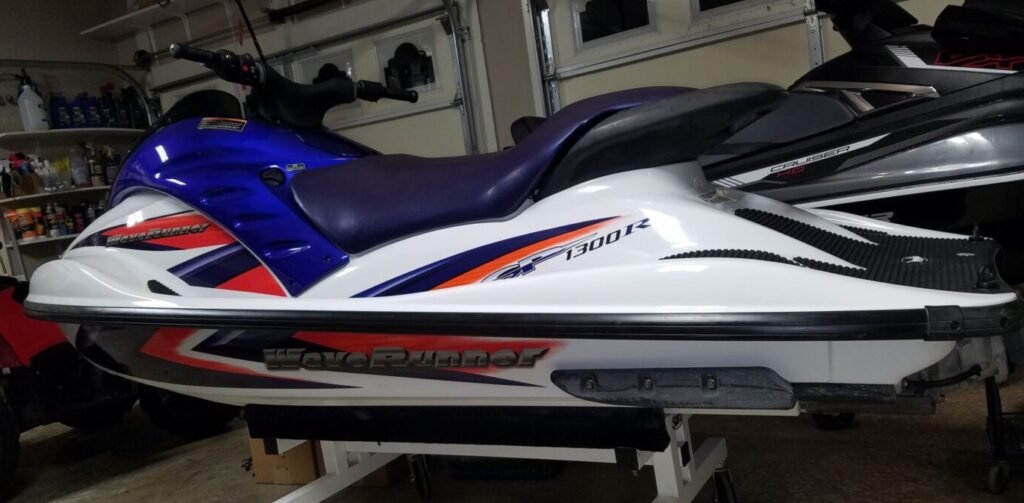
Engine Details
The Yamaha GP1300R is equipped with a 1306cc, three-cylinder, two-stroke engine, featuring Yamaha’s Power Valve System (on 2003-2004 models). This engine was initially designed to bring both responsiveness and smooth delivery to high-performance riders. The 2005 and later models saw the elimination of the power valve system, enhancing reliability and simplifying maintenance. With electronic fuel injection, this engine balances power with fuel efficiency, making it a more appealing choice over its carbureted predecessors. While some riders prefer the distinct kick of a power-valve-equipped engine, many appreciate the cleaner performance and longevity of the later models. 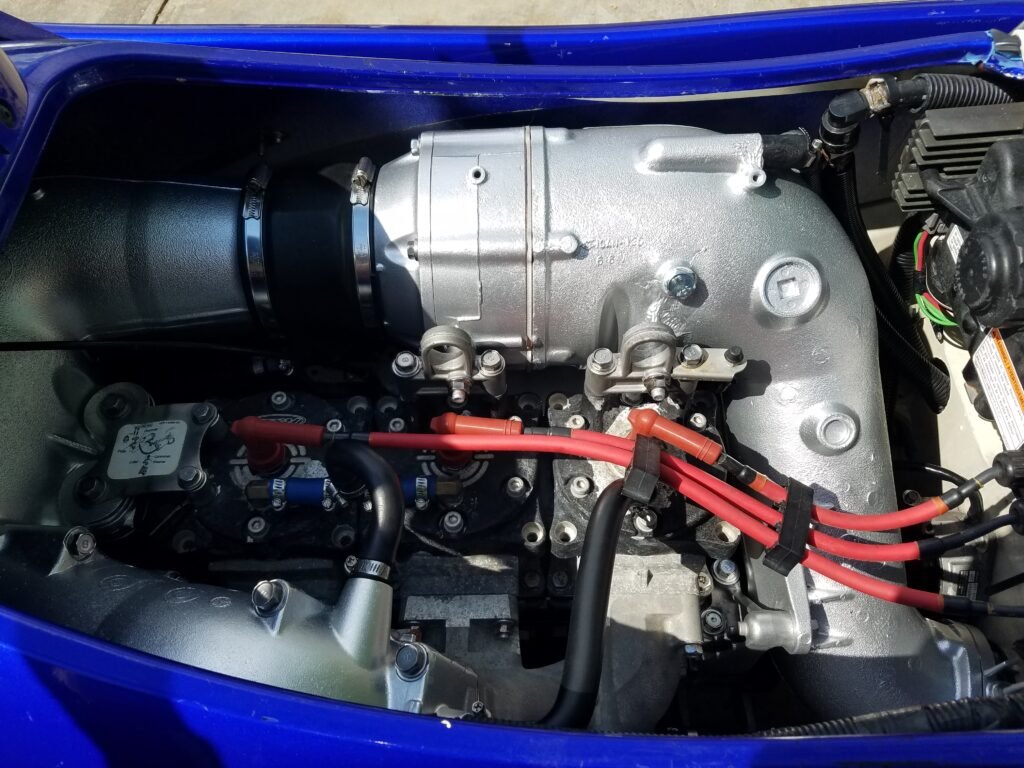
Primary Specifications and Equipment
Built for speed, the GP1300R’s specifications are tuned to enhance both straight-line speed and maneuverability. The ski is equipped with Yamaha’s jet pump propulsion system, providing efficient water flow and consistent thrust. With limited storage space, the GP1300R is designed for thrill-seekers more than long-distance adventurers, yet it remains manageable for daily rides. Its lightweight hull and streamlined design reduce drag, allowing it to cut through choppy waters with ease. Enthusiasts have noted the impressive top speeds, and many have found that with some performance mods, the GP1300R is a beast on open water.
Hull Material and Design
Yamaha’s GP1300R features a durable, lightweight fiberglass hull designed for aggressive riding. This hull was crafted to be lighter, enhancing agility and allowing the GP1300R to handle exceptionally well in both flat water and moderate chop. Yamaha’s commitment to a lightweight build means the hull is more susceptible to dings, so some owners opt for reinforcement. Riders often commend the hull’s response and tracking, making it ideal for those looking for sharp turns and agile movement. However, it shines best on smoother surfaces, where riders can unleash its full power.
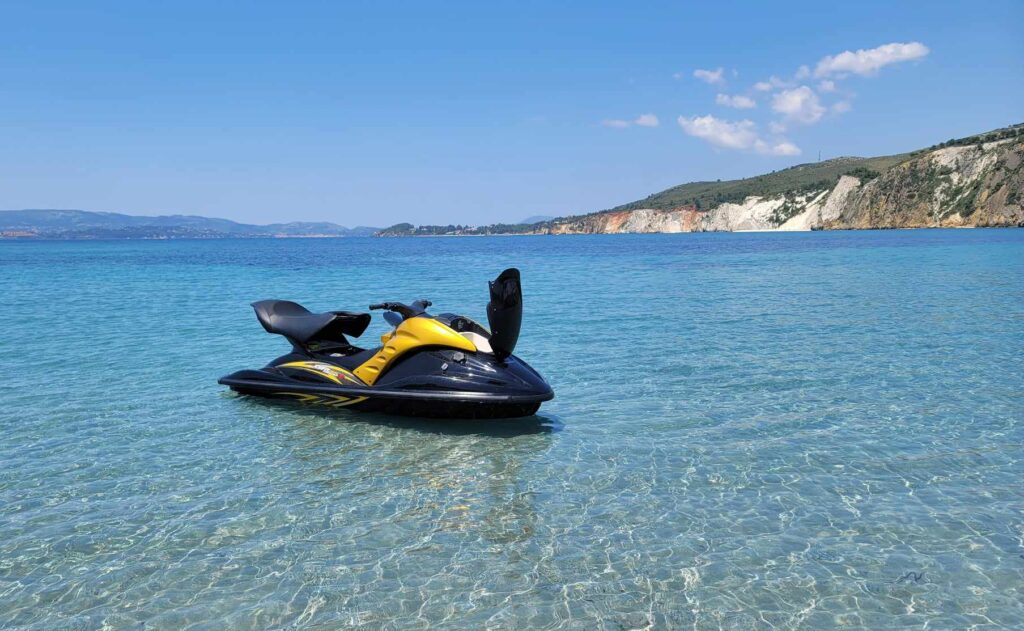
2003-2004 GP1300R Special Differences
The 2003-2004 Yamaha GP1300R models are distinguished by several unique features that set them apart from the 2005-2008 lineup. One of the most notable differences is the inclusion of Yamaha’s exhaust power valve system, which adjusts exhaust port timing to optimize power delivery throughout the RPM range. This system provides a smoother transition between low and high speeds, delivering a sharper throttle response and a “punchier” acceleration experience that many riders find thrilling. These models also include an intake air temperature sensor, which enhances engine tuning for better performance under varying conditions.
Another unique feature of the 2003-2004 GP1300R is the basic magnetic steering position sensor, which provides precise data for the engine control system, contributing to a more refined and responsive riding experience. While these earlier models produce an impressive 165 horsepower, the power valve system gives the engine a distinct, hands-on feel, making it more engaging for performance enthusiasts. The hull design and lightweight construction also lend themselves well to spirited, aggressive riding, particularly on smoother waters.
In terms of aesthetics, the 2003 model stands out with its white hull accented by purplish-blue and orange graphics, a bold and classic design that remains a fan favorite. The 2004 Yamaha GP1300R introduced darker tones and sleeker styling, giving it a more modern, aggressive look compared to the 2003 model. Both designs continue to resonate with collectors and enthusiasts who appreciate their vintage appeal.
However, the 2003-2004 models require more regular maintenance due to the exhaust power valve system, which is prone to wear if not properly maintained. Despite this, many riders prefer these early GP1300R models for their sharper throttle response and hands-on riding dynamics, making them a standout choice for those who enjoy the raw, two-stroke performance that Yamaha perfected in this era.
My GP1300R Complete Rebuild
2005-2008 GP1300R Special Differences
The 2005-2008 Yamaha GP1300R models introduced several key updates that enhanced reliability and durability compared to the 2003-2004 versions. The most notable change was the removal of Yamaha’s exhaust power valve system. By eliminating this feature, Yamaha simplified the engine design, significantly reducing maintenance requirements and improving long-term reliability. A more enhanced clock-to-clock magnetic steering sensor was used on the 2005-2008 models to help improve stability. The engine enhancements brought power up to 170 horsepower, but with fewer moving parts, it became a more user-friendly option for riders who wanted consistent performance without the need for frequent adjustments.
Another important upgrade was the enhanced ECU and fuel injection mapping, which improved fuel delivery and engine efficiency. These refinements reduced issues related to power valve wear and boosted the overall reliability of the ski. Additionally, Yamaha reinforced the hull design in critical stress areas, making it more durable and better suited for high-speed riding and rough water conditions. This increased durability was especially appealing to riders who pushed their GP1300R to the limits in challenging environments.
The later models also stood out with their striking color schemes. The 2007 Yamaha GP1300R featured a sleek black and gold design that quickly gained popularity among collectors and performance enthusiasts. The 2008 GP1300R, with its iconic blue and black color scheme, is widely regarded as the best color option ever produced for the model. The 2008 edition also marked the final year of production for the GP1300R, adding a layer of exclusivity and making it one of the most sought-after versions by Yamaha fans.
The updates made from 2005 onward prioritized longevity and ease of maintenance, which appealed to riders looking for a high-performance watercraft with fewer upkeep demands. The combination of streamlined engine design, enhanced durability, and standout aesthetics cemented the 2005-2008 Yamaha GP1300R as a favorite among enthusiasts and collectors alike.
What Riders are Saying about the Yamaha GP1300R
Riders across the board praise the GP1300R’s explosive acceleration, precise handling, and aggressive styling. It’s considered by many to be one of the last great two-stroke watercraft. While the pre-2005 power valve models are lauded for their lively performance, later models are appreciated for their low-maintenance design and reliable engine. Owners of the 2008 model often claim it as a piece of personal watercraft history, and the black/gold 2007 is another cherished collector’s piece.
Best Accessories Available for the Yamaha GP1300R
The GP1300R’s aftermarket community is well-developed. Riders often recommend accessories such as:
- Upgraded impellers for enhanced speed and acceleration.
- High-performance intake grates and ride plates, which provide additional grip and smoother handling in choppy water.
- Aftermarket sponsons to improve cornering capabilities.
- Custom Traction mats for a more comfortable, non-slip ride.
Performance Features
Quick Shift Trim System
One of the standout features of the Yamaha GP1300R is the Quick Shift Trim System. The system had 5 positions, 2 Up, Neutral, and 2 Down. This system allows riders to adjust the trim angle of the watercraft on the fly, providing better control and stability. The ability to quickly adjust the trim angle ensures optimal performance in different water conditions, whether it’s calm or choppy waters. 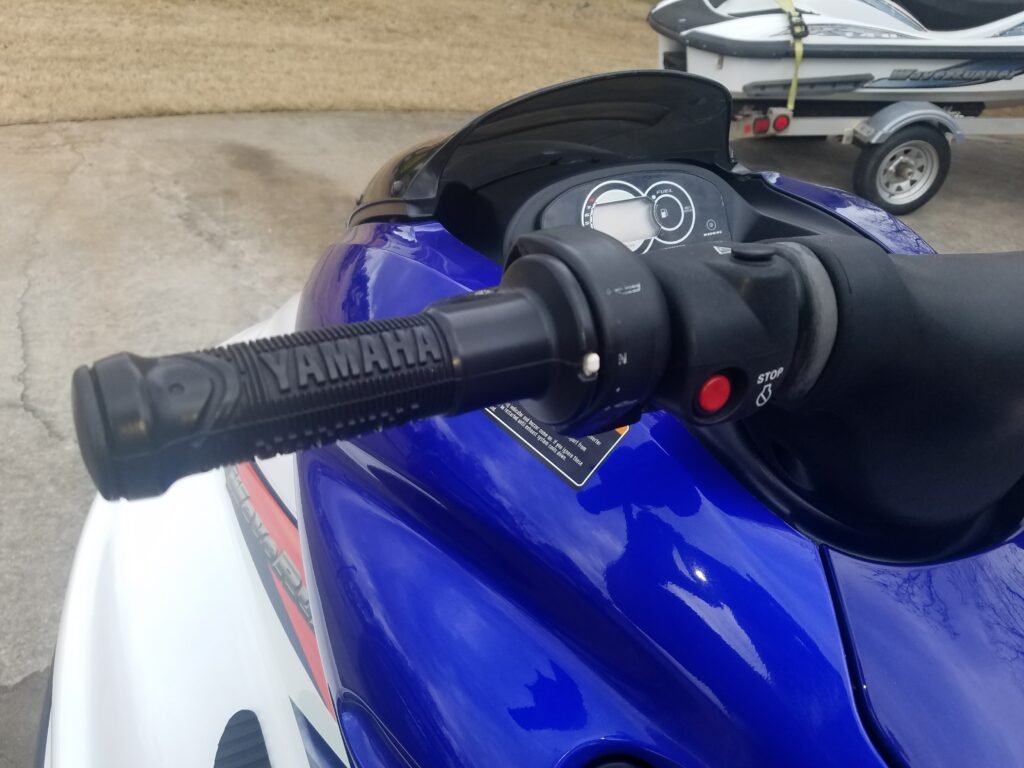
Adjustable sponsons
The Yamaha GP1300R also features adjustable sponsons, which are wing-like extensions on the sides of the watercraft. These sponsons can be adjusted to increase or decrease stability and control during turns and high-speed maneuvers. Riders can customize the handling of the GP1300R based on their preferences and riding style, ensuring an enjoyable and personalized experience on the water. 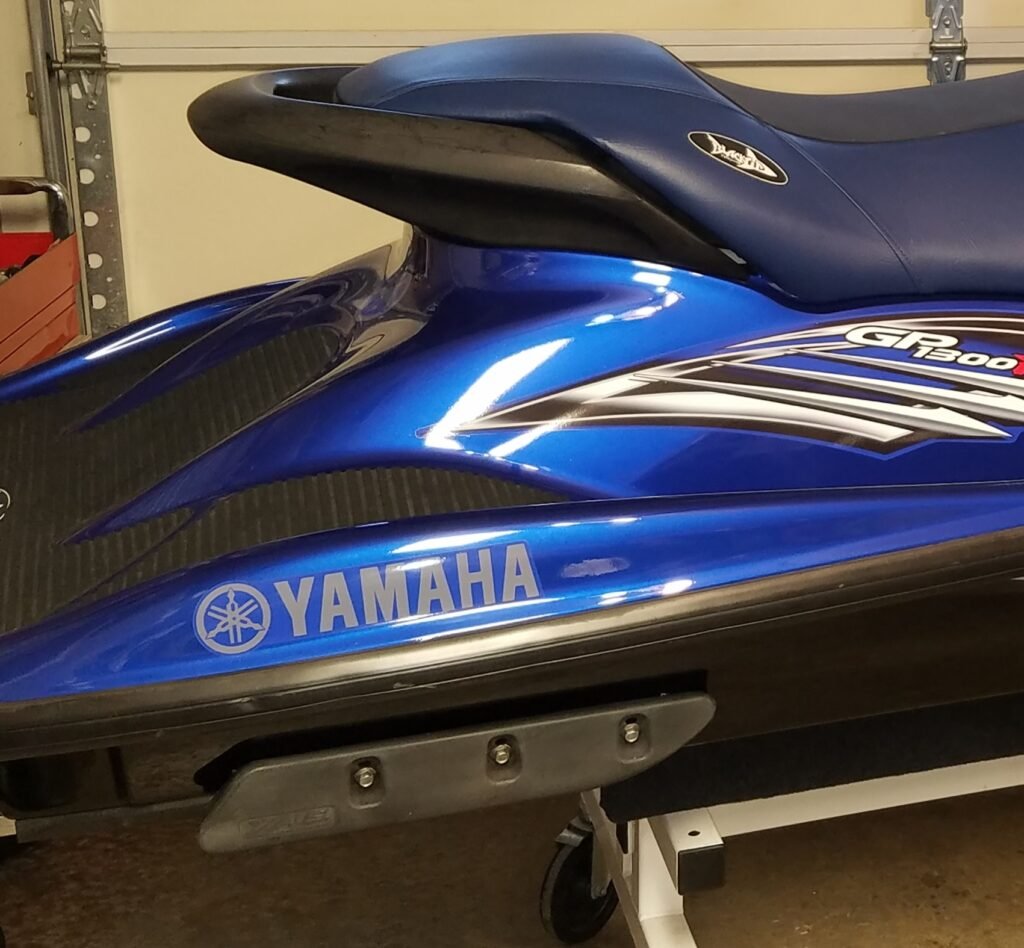
Traction control system
To enhance stability and control, the GP1300R is equipped with a traction control system. This system uses advanced technology to ensure optimal traction on the water, even in challenging conditions. With the traction control system, riders can maintain better control over the watercraft, reducing the chances of accidents or loss of control. 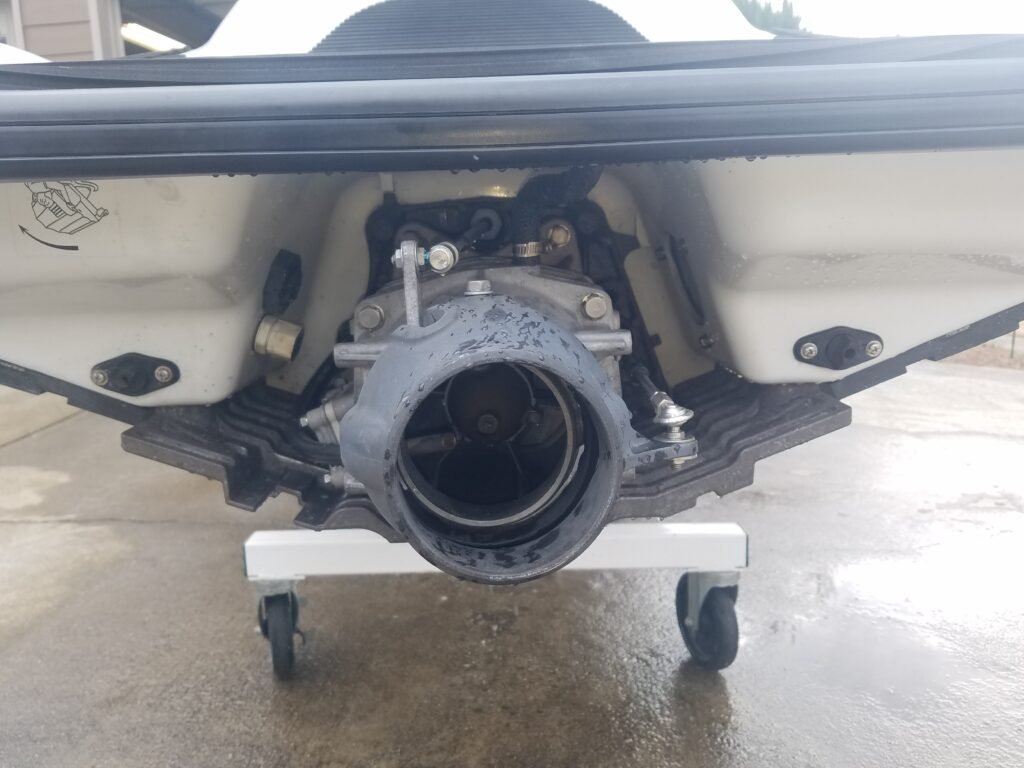
Yamaha GP1300R Engine Specifications
| Feature | Details |
|---|---|
| Engine Type | 2-Stroke, EFI |
| Horsepower (hp) | ~ 165-170 HP |
| Top Speed (mph) | 67-69 mph |
| Displacement (cc) | 1297 cc |
| Cylinder Bore & Stroke (mm) | 84 X 78 mm |
| Compression Ratio | 5.9:1 |
| # of Cylinders | 3 |
| Cooling System | Open Loop Water-Cooled |
| Fuel System Type | Electronic Fuel Injection |
| Fuel Minimum Octane Rating | 86 |
| Fuel Consumption | ~15.1-16.6 GPH |
| Oil Capacity (gal/ liters) | 1.5 U.S. gal/ 5.5 liters |
Oil Quantity Needed For Oil Change (gal/ liters) | approx. 1.5 U.S. gal/ 5.5 liters |
| Ignition | Digital CDI |
| Exhaust | Wet Exhaust |
Yamaha GP1300R Primary Specifications
| Feature | Details |
|---|---|
| Length (“) | 115.4 inches |
| Width (“) | 45.3 inches |
| Height (“) | 40.2 inches |
| Dry Weight (lbs) | 653 lbs |
| Load Capacity (lbs) | 353 lbs |
| Seating Capacity | 2 |
| Storage Capacity | 18.6 U.S. gal |
| Fuel Tank Size (gal/ liters) | 15.9 U.S. gal/ 60 liters |
| Fuel Reserve Size (gal/ liters) | 1.0 U.S. gal/ 3.78 liters |
| Battery Size/ Number | 12 V 19Ah/ YB16CL-B |
| Towing Capable (Y/N) | N |
| Hull Material | Fiberglass |
| Hull Type | Semi-V |
| Body/ Deck Material | (SMC) Sheet Molded Compound |
| Colors Available | 2003 White/ Purplish Blue and Orange,… 2007 Black/ Gold, 2008 Black/ Blue |
| Sponsons | Yes, Adjustable |
| Boarding Step | N, Boarding Platform |
| Instrumentation | Digital w/ Fuel Level, Tachometer, Speedometer and Warning Lights |
| Drive System | Jet Pump |
| Trim System | Yes, Manual: 5 Positions including Neutral |
| Rear View Mirrors | N |
| Original Selling Price | $8999- $9,499 |
Service Item Details and Availability Table
| Product | OEM Part Number | Recommended Link To Buy |
|---|---|---|
| Oil Filter | F0D-6775C-01-00 | Check Price and Availability |
| Engine Oil | Yamalube 2W | Check Price and Availability |
| Spark Plugs | NGK BR8ES-11 | Check Price and Availability |
| Air Filter | N/A | N/A |
| Fuel Filter | Not Listed | Check Price and Availability |
| Battery | YB1-6CLB0-00-00 | Check Price and Availability |
| Jet Pump Oil/ Grease | ACC-EPNOC-GS-05 | Check Price and Availability |
| Storage Cover | OEM or Aftermarket | |
| Traction Mats | OEM or Aftermarket | Check Price and Availability |
Pros and Cons of the Yamaha GP1300R
Pros
- High performance and handling
- Reliable and durable engine in later models
- Excellent aftermarket support
Cons
- Limited storage space
- Heavier than some newer models
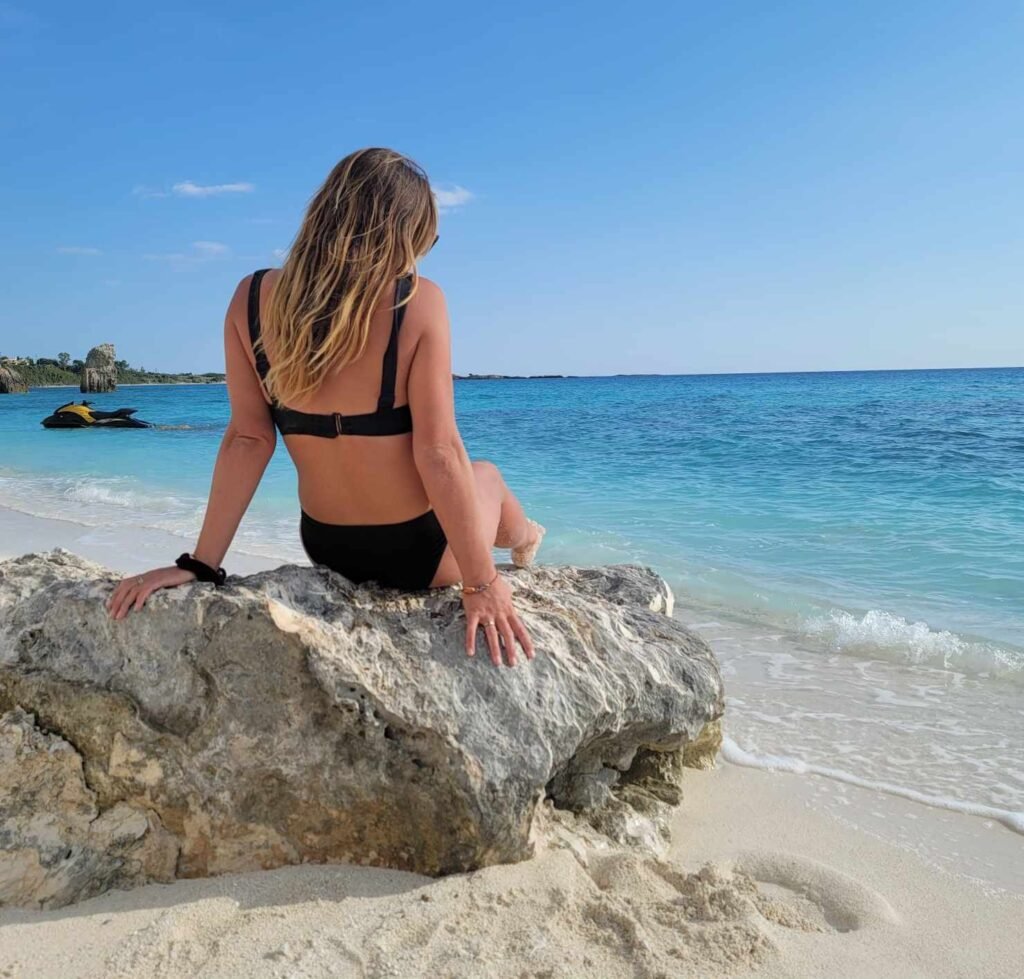
Frequently Asked Questions about the Yamaha GP1300R
- What is the top speed of the Yamaha GP1300R? The top speed of the Yamaha GP1300R is around 65-68 mph, depending on model year, conditions, and modifications.
- How reliable is the Yamaha GP1300R engine? The GP1300R’s two-stroke engine is generally reliable, especially the 2005-2008 models, which lack a power valve, reducing maintenance needs.
- Is the Yamaha GP1300R fuel-efficient? The GP1300R is not known for fuel efficiency; it consumes more fuel than newer four-stroke models, especially under heavy acceleration.
- Does the Yamaha GP1300R handle well in rough water? Yes, the GP1300R handles moderately well in rough water due to its stable hull design, though it performs best on flat to light-chop conditions.
- What type of fuel does the Yamaha GP1300R require? Yamaha recommends using premium fuel with a minimum octane rating of 91 for the GP1300R to ensure peak performance.
- How much horsepower does the Yamaha GP1300R have? The GP1300R produces about 165 horsepower in the 2003-2004 models and slightly higher in the 2005-2008 models, making it one of the most powerful two-stroke watercraft of its time.
- Can the Yamaha GP1300R be used for towing? While possible, the GP1300R isn’t ideally suited for towing due to the fact that it is only rated for 2 passengers and the lack of rear view mirrors to see when a rider falls off. Towing a tube or wakeboard can also strain the engine.
- What are the main differences between the 2003-2004 and 2005-2008 GP1300R models? The 2003-2004 models feature an exhaust power valve system and an intake air temp sensor, whereas the 2005-2008 models are non-power valve, which improves reliability and simplifies maintenance.
- What is the resale value of a Yamaha GP1300R? The resale value of the GP1300R varies, but clean, well-maintained models, especially 2007-2008 editions, hold strong value due to their popularity and limited availability.
- What are common modifications and upgrades for the Yamaha GP1300R? Common upgrades include performance impellers, aftermarket exhaust systems, upgraded sponsons, ride plates, and intake grates to enhance speed, handling, and acceleration.
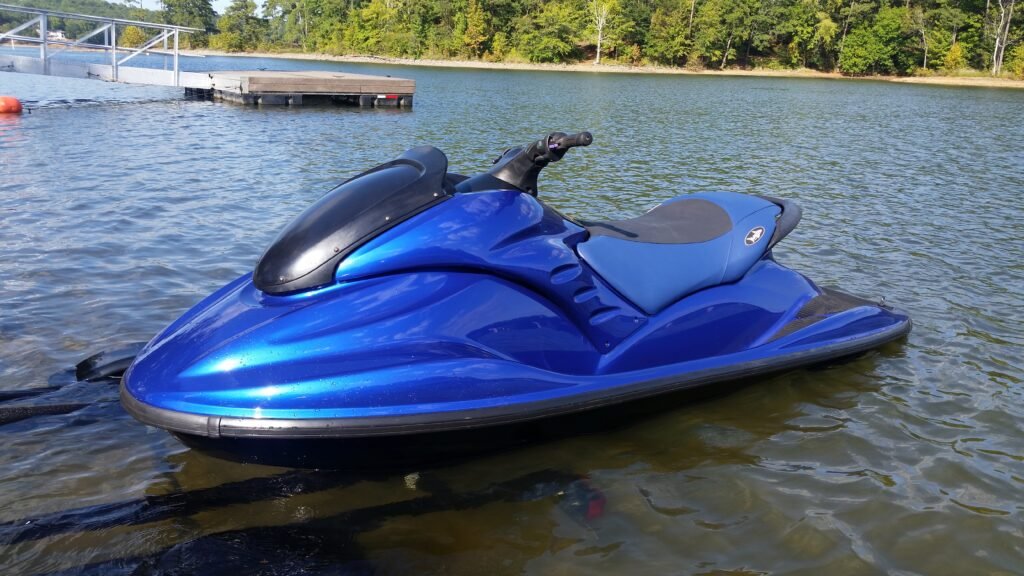
Suitability for Riders
Experienced rider’s choice
The GP1300R Yamaha is an ideal choice for experienced riders who are seeking a high-performance personal watercraft. Its powerful engine, advanced features, and exceptional speed make it a thrilling option for those who have mastered the art of riding on the water. With its lack of a reverse system it makes the ski a little more challenging when docking for riders who are new to the sport. The GP1300R’s ability to handle high speeds and challenging water conditions allows experienced riders to push their limits and fully enjoy the ride.
Maintenance and repair considerations
While the GP1300R offers an exhilarating riding experience, it is important to consider the maintenance and potential repair costs associated with owning an older model. As a waverunner that was introduced in 2003, the GP1300R may require more frequent repairs and maintenance compared to newer models. It is crucial to stay on top of regular maintenance schedules and address any issues promptly to ensure the watercraft’s longevity.
Not recommended for beginners
Due to its high-performance nature and the potential for maintenance and repair issues, the Yamaha GP1300R is not recommended for beginners or inexperienced riders. The GP1300R requires a certain level of skill and knowledge to handle properly. It is important for beginners to gain experience on more beginner-friendly watercraft models before attempting to ride the GP1300R. Safety should always be a top priority, especially for those new to riding personal watercraft.
Competition Comparison
The Yamaha GP1300R, with its robust two-stroke engine and high-performance handling, often competes against other powerful watercraft like the 1999-2005 Kawasaki Ultra 150 and Sea-Doo’s four-stroke RXT and RXP models. Each of these competitors brings a unique set of strengths that appeal to different types of riders. The Kawasaki Ultra 150 is known for its similar two-stroke engine configuration, delivering explosive power and lightweight handling akin to the GP1300R. It’s slightly smaller, which gives it a nimbler feel, especially in flat-water conditions, but it lacks some of the GP1300R’s stability in rougher waters.
While both models offer thrilling acceleration and top speeds, the GP1300R’s larger frame and hull design provide greater control in choppy conditions, which many riders prefer for varied riding environments. On the four-stroke front, Sea-Doo’s RXP is a compact powerhouse that matches the GP1300R’s speed but stands out with its increased fuel efficiency and quieter operation. The four-stroke engine offers a smoother ride with less exhaust odor and smoke, which appeals to riders focused on environmental considerations and cleaner rides.
The RXP’s four-stroke engine lacks the raw, immediate power of the GP1300R’s two-stroke, making the Yamaha feel more aggressive in acceleration. Similarly, the Sea-Doo RXT provides impressive speed and stability, comparable to the GP1300R, and features a larger, more stable design suitable for rougher waters.
While heavier than the GP1300R, the RXT offers three-passenger seating and excellent fuel efficiency, making it a practical choice for longer rides. However, many performance-oriented riders feel that the GP1300R’s lightweight build and rapid acceleration offer a more exhilarating experience, especially for solo riders. Overall, while the Kawasaki Ultra 150 matches the GP1300R’s two-stroke thrill factor, and the Sea-Doo RXT and RXP bring four-stroke stability and efficiency, the GP1300R carves a unique niche with its combination of agility, power, and competitive pricing, making it a versatile choice for performance-focused enthusiasts.
Conclusion
The Yamaha GP1300R stands out as a high-performance jetski that has become a legend in the world of personal watercraft. With a 1297cc two-stroke engine that delivers thrilling acceleration and an impressive top speed, the GP1300R appeals to riders who crave the excitement of raw power. Yamaha’s decision to remove the power valve system in the 2005-2008 models improved reliability, which continues to make these models popular with riders who value longevity and minimal maintenance without sacrificing performance. This watercraft is also revered for its distinctive design, with the Blue/Black 2008 model and Black/Gold 2007 edition becoming collector’s favorites.
The GP1300R’s lightweight fiberglass hull is built for agility, providing a lively, responsive feel that is ideal for slicing through calm waters and handling light chop. Compared to competitors like the Kawasaki Ultra 150 and Sea-Doo’s RXT and RXP, the GP1300R holds its own as an agile, adrenaline-inducing ride with a two-stroke engine that delivers a unique punch. For those looking to own a part of jetski history, the GP1300R combines legendary power, iconic design, and reliable engineering, making it a top choice for both collectors and thrill-seekers.
With its final production year in 2008, this model has only grown in value and reputation, marking it as a special piece of Yamaha’s watercraft legacy. Whether you’re a dedicated enthusiast or a newcomer to performance PWC, the GP1300R offers an unforgettable experience, proving itself as one of the best two-stroke jetskis ever crafted.
Disclosure: As an Amazon Associate, I earn from qualifying purchases.
Related Articles:
The Legendary 1993 Yamaha WaveBlaster 700 Jetski: A Pure Adrenaline Injected Experience!
1999 to 2005 Kawasaki Ultra 150 Jetski: A High-Performance 2-Seater PWC

